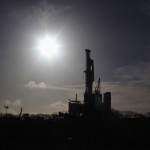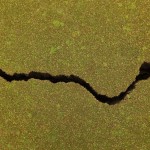Just How Strong Were Weekend Earthquakes in Dallas?

Courtesy of the USGS http://earthquake.usgs.gov/earthquakes/eventpage/usc000cyc1#dyfi
The USGS maps where earthquakes were felt. This shows reports from the quake that struck Irving, Texas.
Update: Read about the Jan. 22, 2013 DFW quake here.
Pretty Strong. For Dallas.
The 3.1 earthquake that shook the Dallas area on Saturday night and the 3.4 quake near Irving were still small by any estimation. Small enough that the L.A. Times even had a little fun covering the quakes, running the headline “Not Everything is Bigger in Texas” on Sunday.
But even though the quakes were babies compared to the types that visit Los Angeles, U.S. Geological Survey records show that they were slightly more intense than most other earthquakes have been in Dallas.
A search of earthquakes within a hundred kilometer radius of the Dallas-Fort Worth Airport on the USGS Circular Area Earthquake Search showed that only one quake has been stronger than the 3.4 recorded in Irving (a 3.5 quake earlier this year that happened closer to Cleburne, Texas, a known hotspot for small earthquakes).
The most powerful quake ever measured in Texas was a 4.6 on the Richter scale, near Snyder, in 1978.
Of the 50 quakes that have been recorded in the area only 8 had been of magnitude 3.0 or higher until Saturday night. The area has still not seen a quake of 4.0 or higher, the level which seismologists consider dangerous.
“Quakes of this size typically don’t cause any damage at all. I’ve seen some reports of broken windows and cracked sheetrock and honestly I’m a little bit dubious of those reports,” Don Blakeman, a Geo-Physicist at the National Earthquake Information Center, told StateImpact Texas.
“Typically these types of quakes don’t do much than get peoples attention,” Blakeman added.
Researchers have established a link between the uptick in earthquakes in Texas and the use of disposal wells to store fluid from hydraulic fracturing. The link is well-illustrated in the Dallas area records, which show only one quake before 2008 when oil and gas fracking began increasing, and 49 since then.
However when it comes to individual seismic occurrences, the cause and effect can be difficult to prove.
“We really can’t tell, they just look like earthquakes to us,” Blakeman said.
He says that the USGS is putting in more seismic monitoring gear to study earthquake clusters near disposal well sites, although he doesn’t know of any in the Dallas area.
“Now if this [earthquake event] turns out to be a larger swarm like we’ve seen in Arkansas and Colorado then they’d probably be considering that,” he said.


